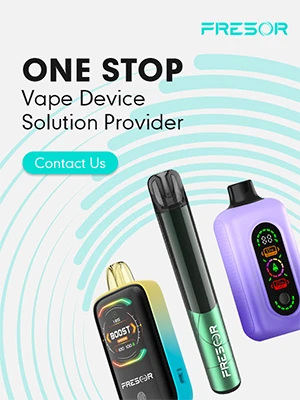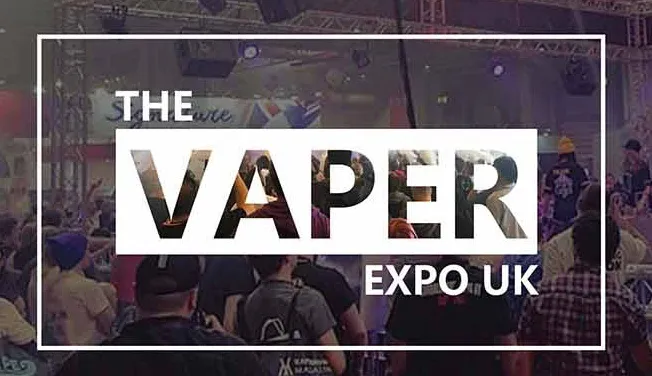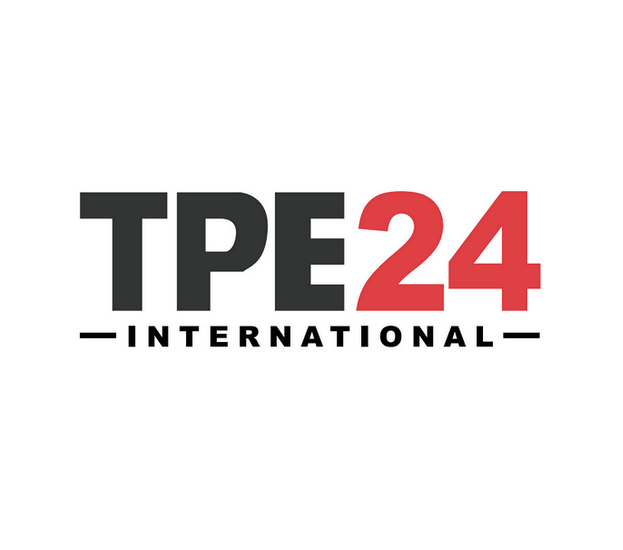Vape Industry News in the United Kingdom: Trends, Regulations, and Market Developments

27 August 2023
Introduction
The vape industry in the United Kingdom (UK) has undergone a remarkable transformation over the years, propelled by shifting consumer preferences, evolving regulations, and emerging market dynamics. As an increasingly popular smoking alternative, vaping has garnered significant attention from both consumers and policymakers. This article delves deeper into the current landscape of the UK vape market, shedding light on the prevailing trends, regulatory frameworks, noteworthy industry news, and the potential future trajectory.
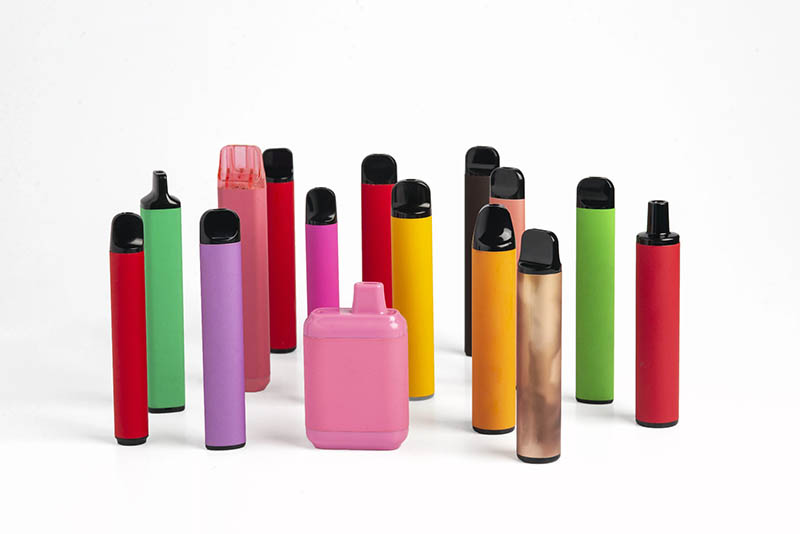
Current Market Trends in the UK Vape Industry
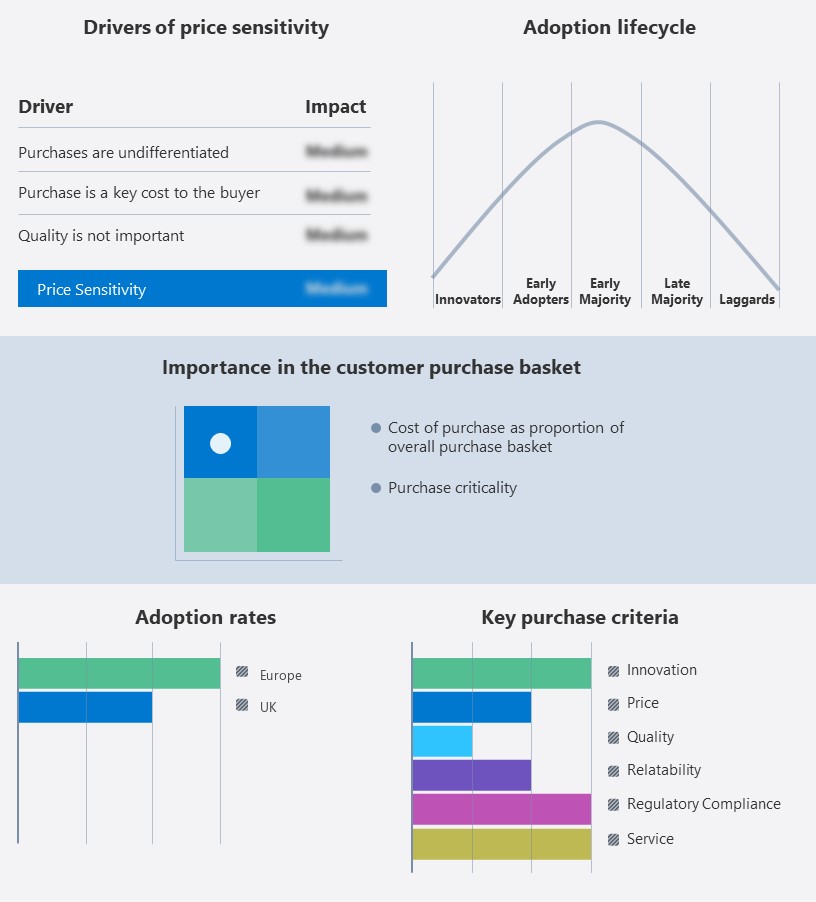
- Vaping Popularity and Trends
The UK vape industry has witnessed a surge in popularity and an evolving landscape of consumer trends. Vaping is no longer just a smoking cessation tool; it has transformed into a cultural phenomenon. Consumers are drawn to vaping for various reasons, including its potential as a harm reduction method, its diverse range of flavors, and its appealing technological advancements.
Among the notable trends is the shifting perception of vaping from a purely functional activity to a lifestyle choice. Vaping enthusiasts seek out premium devices, customized e-liquids, and unique accessories that reflect their individual preferences and personal style. This trend has spurred innovation in device designs, catering to both functional and aesthetic desires.
- Impact of COVID-19
The onset of the COVID-19 pandemic led to complex implications for the UK vape industry. Supply chain disruptions affected the availability of vaping products, prompting a renewed focus on domestic production and sourcing. As lockdowns and restrictions limited social interactions, some vapers turned to online platforms for purchasing their vaping supplies, accelerating the growth of e-commerce within the industry.
Moreover, the pandemic sparked discussions about respiratory health and the potential benefits of harm reduction alternatives like vaping. While ongoing research is needed to understand the long-term effects, some consumers saw vaping as a way to reduce harm associated with traditional smoking. However, public health authorities and the industry emphasized the importance of evidence-based information and the need for responsible marketing.
The pandemic also highlighted the importance of public health preparedness and education. Industry stakeholders and regulators recognized the need for clear communication on vaping's role in harm reduction and the available resources for smokers looking to switch.
Regulatory Landscape of the UK Vape Industry

- The Tobacco and Related Products Regulations (TRPR)
The regulatory framework governing the UK vape industry is primarily defined by the Tobacco and Related Products Regulations (TRPR). These regulations were introduced in 2016 to ensure that vaping products are manufactured, distributed, and marketed in a safe and responsible manner. TRPR covers various aspects of the industry, including product standards, labeling, advertising, and reporting requirements.
One of the key objectives of TRPR is to guarantee the safety and quality of vaping products. Manufacturers and importers must adhere to specific product standards to ensure that their products meet established safety criteria. This includes requirements for nicotine levels, ingredients, packaging, and labeling. Additionally, TRPR mandates that all vaping products undergo rigorous testing and reporting to regulatory authorities before they can be legally sold on the market.
- Advertising and Promotion Restrictions
Advertising and promotion of vaping products in the UK are subject to stringent restrictions aimed at preventing youth exposure and promoting responsible marketing. The advertising rules prohibit any form of promotion that could appeal to individuals under the legal smoking age. This includes restrictions on using images or themes that might be associated with youth culture, celebrities, or attractive lifestyles.
Vaping advertisements are also prohibited in media specifically targeted at individuals under 18 years of age. Retail displays and advertisements must not be placed in locations where they can be easily seen by young individuals. The goal is to ensure that vaping marketing efforts are directed toward adult smokers who are seeking harm reduction alternatives while safeguarding young people from potential exposure.
- Flavor Bans and Restrictions
The issue of flavored vaping products has been a point of contention within the regulatory landscape. While flavors have contributed to the appeal of vaping among adults looking to transition from traditional smoking, concerns have arisen about their attractiveness to youth. Flavors such as fruit, candy, and dessert have been criticized for potentially luring young individuals into vaping.
As a response, discussions about implementing flavor bans or restrictions have taken place. Some areas within the UK have considered or implemented measures to limit the availability of certain flavors or restrict them to specialized vape shops. The goal is to strike a balance between catering to adult preferences and preventing the initiation of vaping among underage individuals.
Improve Your Vape Brand with TOP Vape OEM/ODM Manufacturer
ALD Vapor, a global leader in vaping industry, is professional in providing one-stop OEM/ODM atomization solutions for vape brands from all over the world since 2009. With over 14 years of experience, over 4000 workers, and 6 factory sites, the company has gained a great reputation among clients and a fast-growing market share.
Industry News and Developments in the UK Vape Market
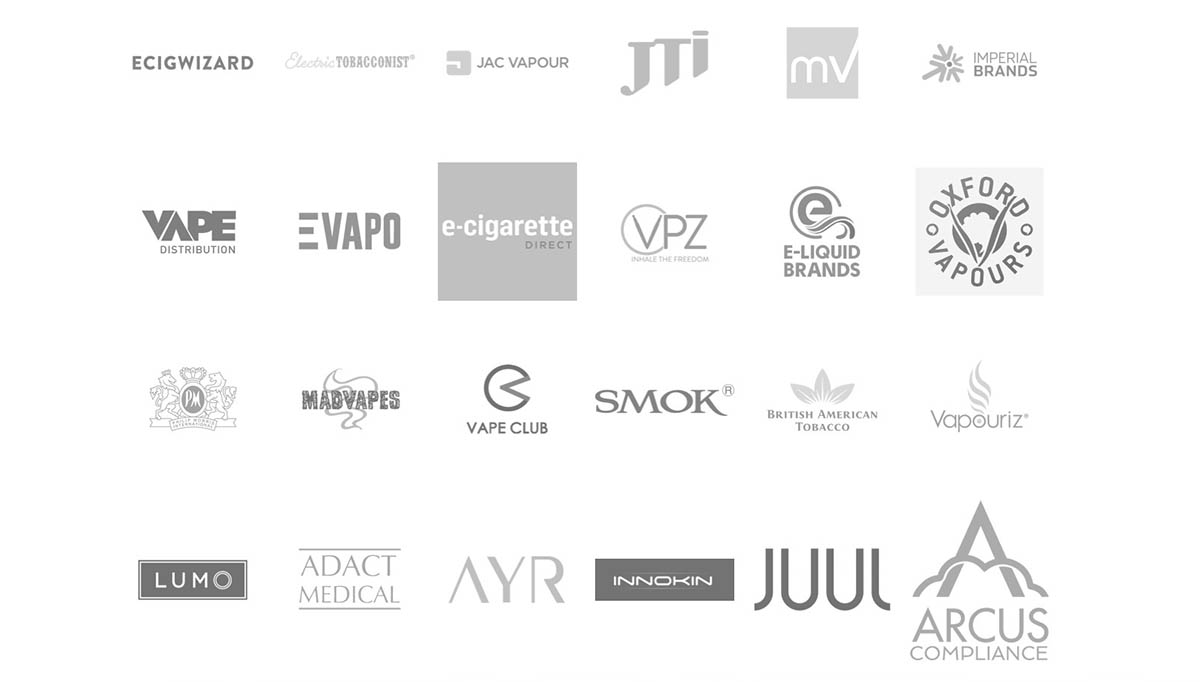
The UK vape industry has experienced significant news and developments in recent years, reflecting both its growth and its evolving regulatory landscape.
- Market Players and Acquisitions in the UK Vape Market
The market has witnessed the emergence of several prominent players and strategic acquisitions. Established tobacco companies and independent vape companies have expanded their presence and influence. Notable acquisitions have taken place as traditional tobacco companies recognize the potential of the vaping market.
Several notable market players and strategic acquisitions have significantly impacted the UK vape industry, reflecting the industry's growth and evolving landscape.
- British American Tobacco (BAT): One of the world's largest tobacco companies, BAT has ventured into the vaping market with its subsidiary, Vype. This brand offers a range of vaping products, including devices and e-liquids. BAT's entry into the vape market underscores the convergence of traditional tobacco companies with the vaping industry.
- Imperial Brands: As a well-established tobacco company, Imperial Brands owns the vaping brand blu. Blu has gained recognition for its range of vaping devices and e-liquids. The acquisition of blu by Imperial Brands showcases the company's interest in expanding its portfolio to include vaping products.
- JUUL Labs: While originally founded in the United States, JUUL Labs has made a significant impact on the UK vape market. Its compact and user-friendly JUUL device gained popularity among adult smokers seeking alternatives to traditional cigarettes. The brand's success and controversies have highlighted the challenges and opportunities within the industry.
- Nerudia: Acquired by Imperial Brands, Nerudia is a UK-based e-cigarette innovation company that specializes in product development, research, and testing. This acquisition demonstrates Imperial Brands' commitment to advancing vaping technologies and meeting regulatory standards.
- Liberty Flights: As one of the UK's pioneering vape companies, Liberty Flights has been involved in the industry since its early days. The company offers a range of vaping products and e-liquids, contributing to the diversification of options available to consumers.
These market players and acquisitions underscore the dynamic nature of the UK vape industry. Established tobacco companies and independent vape companies are striving to capture a share of the growing market, resulting in a mix of innovation, competition, and regulatory challenges.
- Product Innovation in the UK Vape Industry
Innovation has been a driving force in the UK vape industry, shaping the evolution of products to meet changing consumer preferences, regulatory requirements, and technological advancements. Notable innovations have led to the development of new devices, e-liquids, and features that enhance the vaping experience. Some key areas of product innovation include:
- Advanced Vaping Devices: The UK vape industry has seen the emergence of advanced vaping devices that cater to various user preferences. From pod systems that offer convenience and simplicity to advanced mods with customizable settings, manufacturers are designing devices to accommodate both novice vapers and experienced enthusiasts. Innovations in battery technology, temperature control, and safety features contribute to a safer and more satisfying vaping experience.
- Nicotine Salt Formulas: Nicotine salt e-liquids have gained popularity due to their smoother and quicker nicotine delivery compared to traditional e-liquids. This innovation has been especially attractive to smokers seeking a more effective alternative to combustible tobacco products. Nicotine salt formulas have contributed to the success of pod systems like JUUL, which have become iconic in the industry.
- Flavour Diversity: Despite flavor restrictions, the industry continues to innovate by offering a diverse range of e-liquid flavors that cater to a variety of tastes. Manufacturers are exploring unique flavor combinations, including fruit, dessert, and beverage-inspired options. The ability to create enjoyable and diverse flavor profiles contributes to customer satisfaction and encourages smokers to transition to vaping.
- User-Friendly Interfaces: User-friendly interfaces have become a hallmark of modern vaping devices. Touchscreens, intuitive buttons, and LED displays provide users with easy access to settings, battery information, and usage data. These interfaces enhance the overall user experience by making devices more accessible and customizable.
- Temperature Control and Safety Features: Temperature control technology allows vapers to set and monitor the temperature of their device, providing a more controlled and consistent vaping experience. Additionally, safety features such as short-circuit protection, overcharge protection, and automatic cutoff mechanisms ensure the safety of users and their devices.
- App Integration and Connectivity: Some advanced vaping devices offer app integration, enabling users to connect their devices to smartphones for enhanced control and monitoring. Through apps, users can adjust settings, track usage, receive notifications, and even access educational content related to vaping.
Product innovation in the UK vape industry reflects the industry's dedication to meeting the needs of consumers while adhering to evolving regulations. As technology continues to advance, vaping devices are becoming more sophisticated, customizable, and tailored to individual preferences, driving the industry forward in its quest to provide safer alternatives to traditional tobacco products.
- Retail and Online Sales
The retail landscape for vape products in the United Kingdom is diverse, with both physical stores and online platforms playing crucial roles in reaching consumers. Retail and online sales channels have distinct advantages and challenges, shaping how consumers access and purchase vape products.
- Physical Retail Stores: Physical vape shops offer a hands-on shopping experience, allowing customers to interact with products, receive personalized recommendations, and seek guidance from knowledgeable staff. These stores often provide a sense of community and a place for vapers to connect with fellow enthusiasts. Many vape shops also offer a variety of accessories, e-liquids, and devices to cater to different preferences. However, the location of these stores is subject to regulatory considerations, such as proximity to schools and restrictions on marketing materials that could appeal to minors.
- Online Sales Platforms: Online platforms have become a significant channel for vape product sales due to their convenience and accessibility. Online retailers offer a wide selection of devices, e-liquids, and accessories, providing consumers with a range of choices that might not be available in local stores. Online shopping allows consumers to compare products, read reviews, and make informed decisions. However, age verification is a critical concern in online sales, as ensuring that products are not sold to underage individuals is a challenge that regulators and industry stakeholders are actively addressing
Future Outlook of the UK Vape Industry: Predictions and Balancing Regulation with Innovation
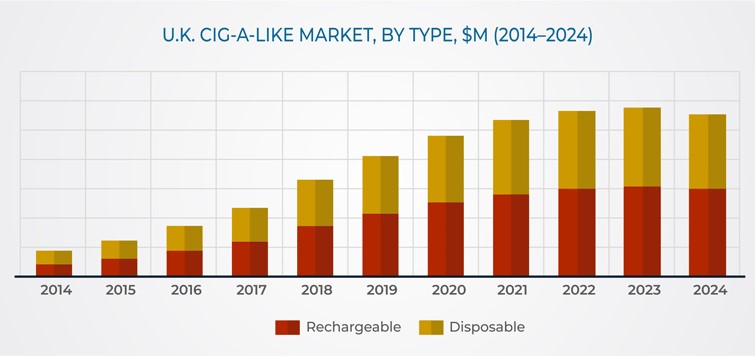
As the United Kingdom's vape industry continues to evolve, several predictions and trends are shaping its future trajectory. Balancing regulatory requirements with ongoing innovation remains a central challenge, and industry stakeholders are working to navigate these dynamics to ensure a sustainable and responsible market.
- Increased Focus on Health and Safety: The UK vape industry is likely to witness an increased focus on product safety, quality assurance, and transparency. With vaping being positioned as a harm reduction tool, consumers and regulatory bodies are demanding products that meet stringent safety standards. Manufacturers and retailers will need to invest in research and development to improve the safety and reliability of devices and e-liquids.
- Innovation in Device Technology: Continued innovation in vaping devices is anticipated, driven by advancements in technology and consumer demands. Manufacturers are expected to develop devices that offer enhanced user experiences, longer battery life, customizable features, and improved flavor delivery. Moreover, devices that incorporate smart technology and connectivity might gain popularity, allowing users to monitor their usage and preferences.
- Flavor Development and Regulation: The evolving landscape of flavor regulations will influence product development and consumer choices. The industry is likely to see a balance between catering to adult vapers' preferences and adhering to regulations that aim to curb youth access and appeal. Manufacturers may focus on creating appealing flavors that resonate with adults while avoiding those that may attract younger consumers.
- Rise of Nicotine Alternatives: In response to consumer demand, the industry might witness the development of a broader range of nicotine alternatives. Products such as nicotine pouches and non-combustible nicotine delivery systems could gain traction as consumers explore various ways to satisfy their nicotine cravings.
- Regulatory Adaptation and Industry Collaboration: The industry's ability to navigate and adapt to evolving regulations will be crucial. Collaborative efforts between industry stakeholders, regulatory bodies, and public health organizations will play a pivotal role in shaping the regulatory landscape. Clear communication, transparency, and responsible practices will be vital to address concerns and ensure consumer safety.
- Striking the Balance: Regulation and Innovation: One of the most significant challenges the UK vape industry faces is striking a balance between regulation and innovation. Stricter regulations are essential to prevent youth access and ensure public health. However, overly burdensome regulations could stifle innovation and limit the availability of safer alternatives for smokers. Finding the right equilibrium between these factors will require ongoing dialogue and cooperation between industry players, regulators, and public health advocates.
Conclusion
In conclusion, the UK vape industry's journey is marked by progress and challenges, with a resolute focus on harm reduction and public health. As industry stakeholders, regulators, and public health advocates collaborate, the industry is poised to contribute positively to the lives of smokers seeking alternatives. Navigating this landscape requires a delicate balance of innovation, regulation, and responsible practices—a journey that will undoubtedly shape the industry's impact on public health and society for years to come.




















